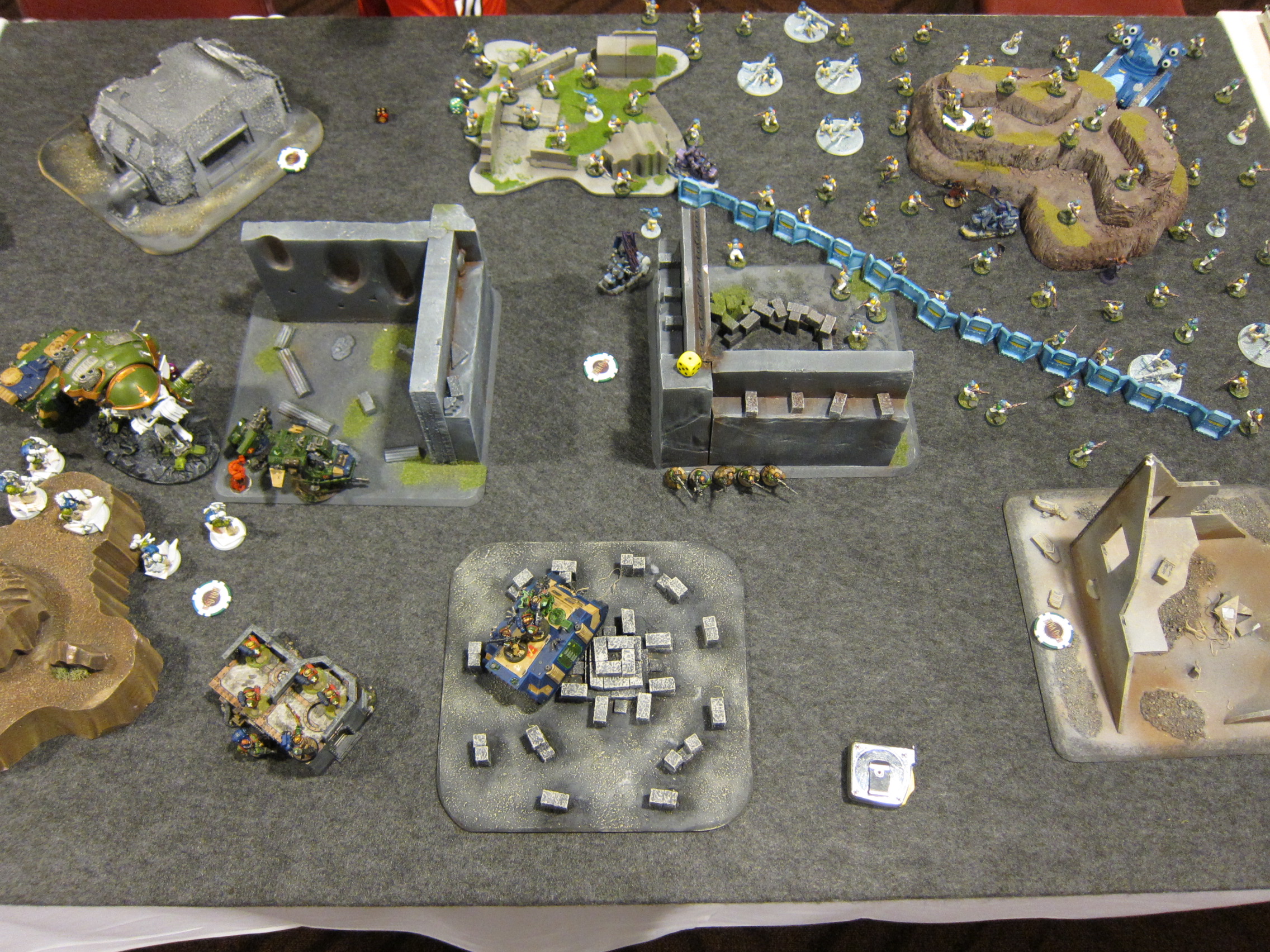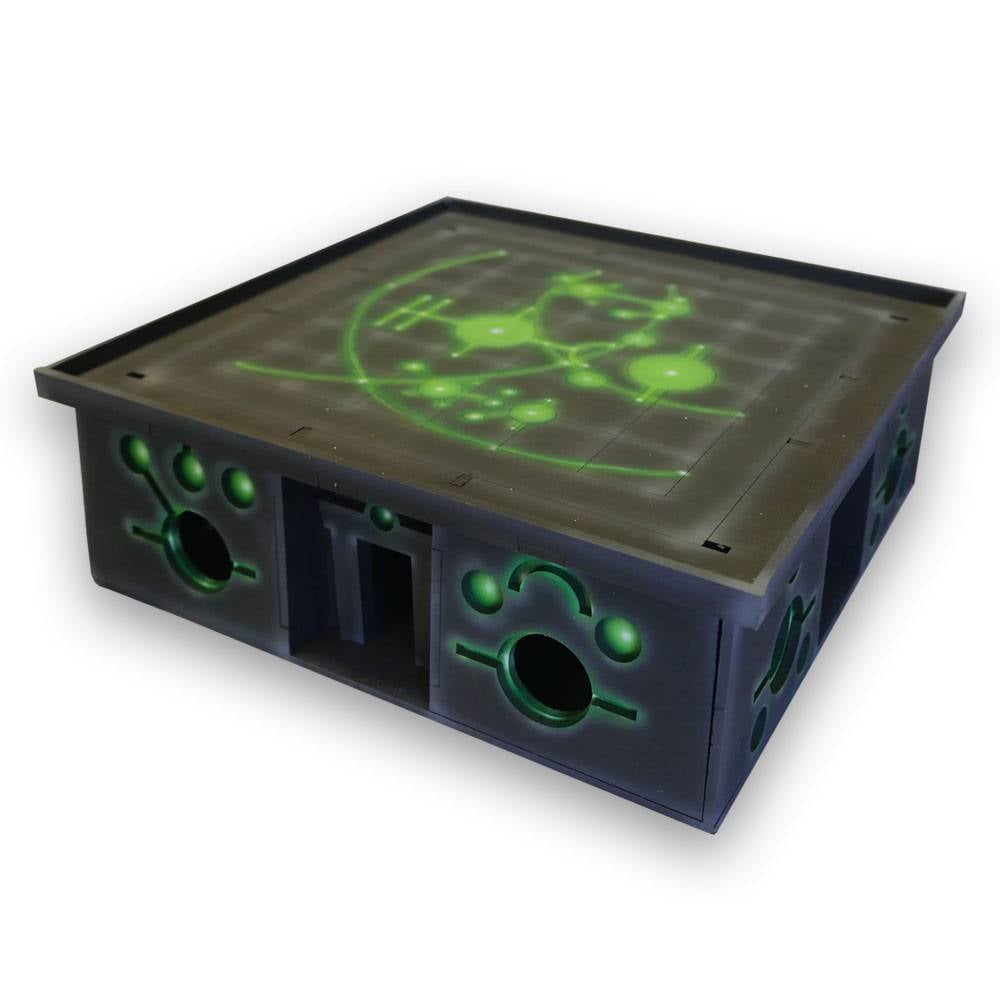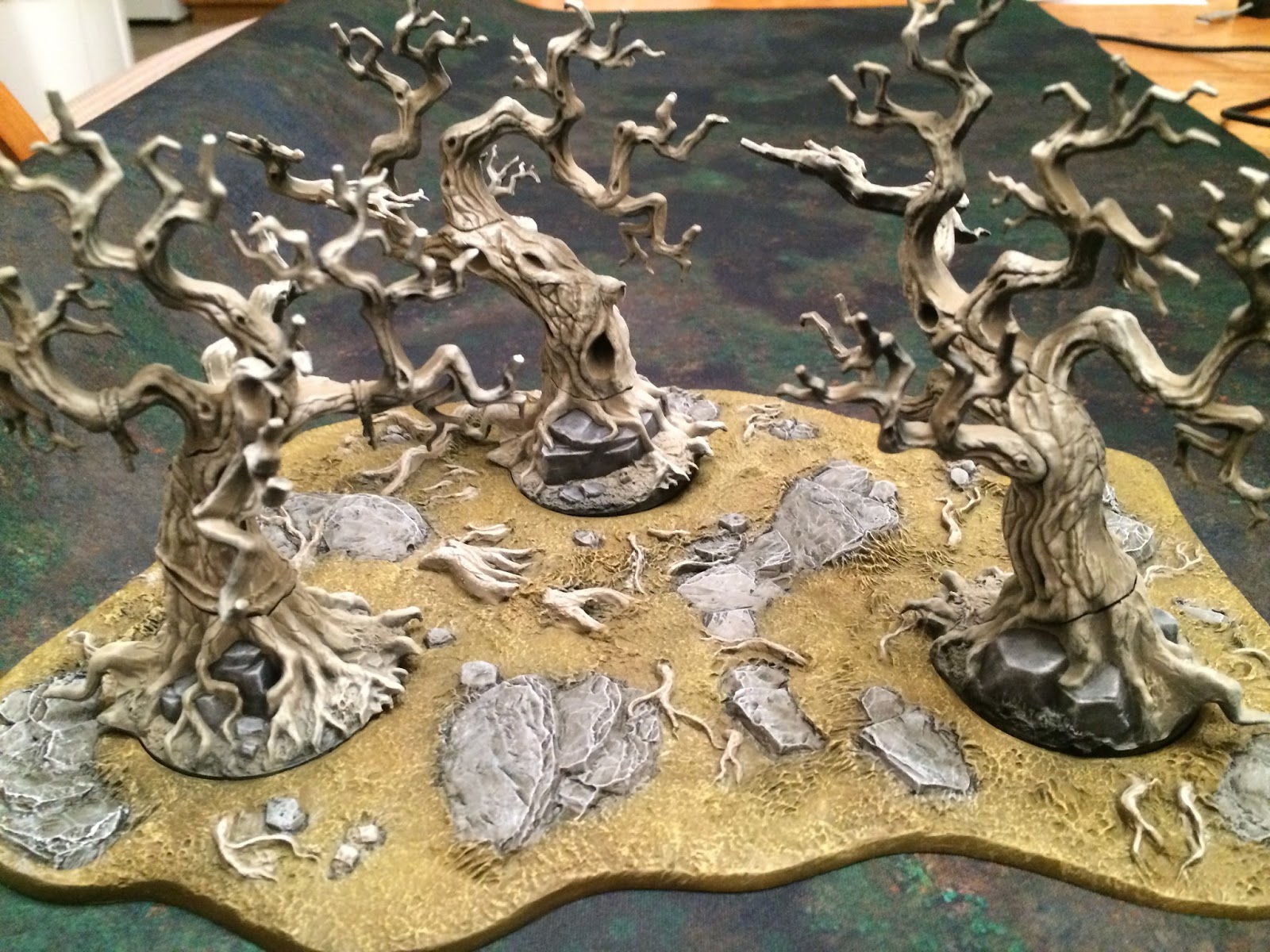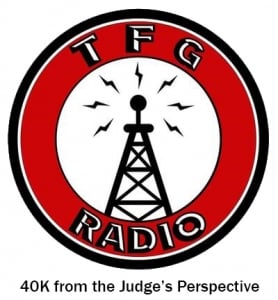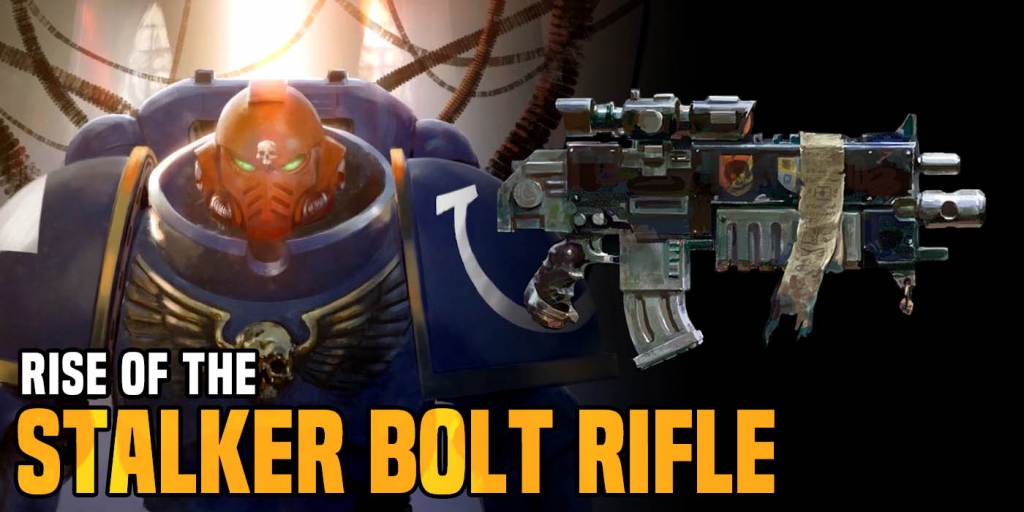Competitive 40K: Know Your Terrain
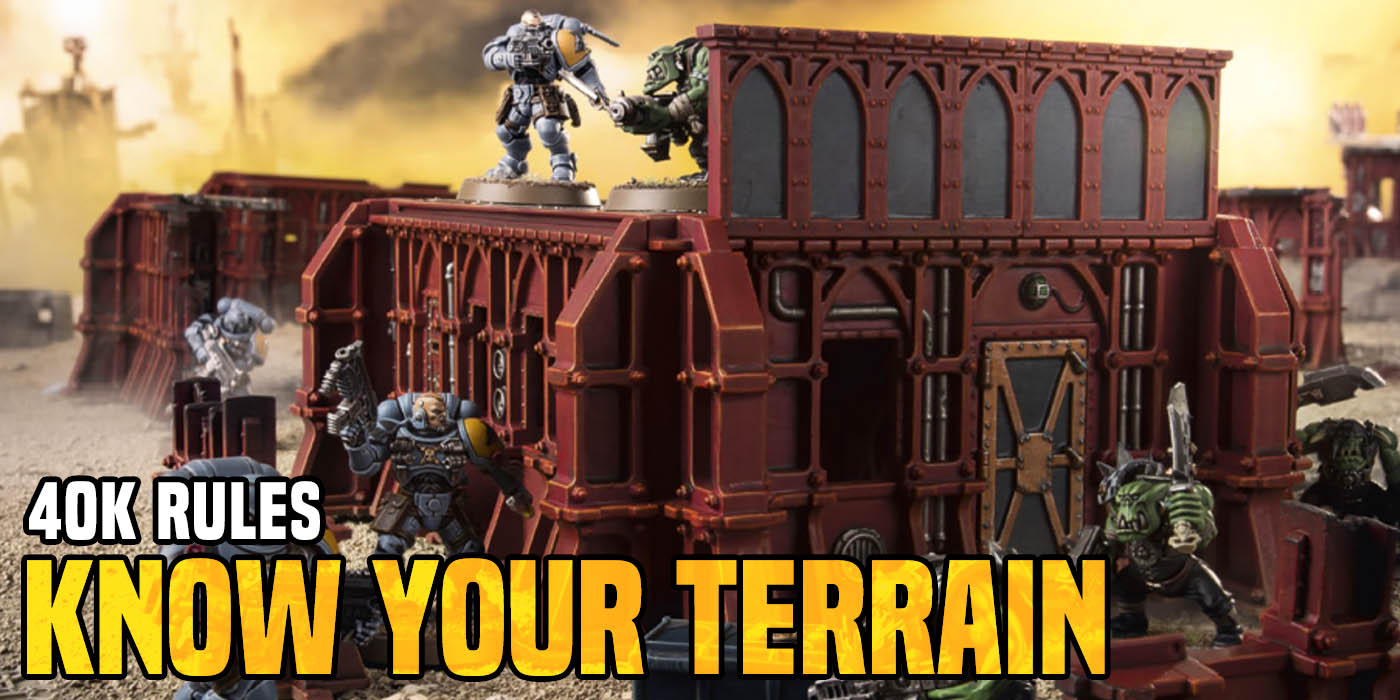

Hey everyone! Adam, from TFG Radio, here to talk some about some of the topics associated with Competitive 40K.
The popularity of Warhammer 40,000 has caused an increase in the number of tournaments being played. Whether it is just a small eight man tournament at your local game store, or a vast grand tournament with hundreds of participants, you can find a tournament happening somewhere around the world every weekend. With this increase on events you will see a varying amount, and type, of terrain being used. In a previous article I discussed the differences in the way a table can more or less be laid out, symmetrical versus asymmetrical.
This article will focus on the various types of terrain you will most likely find at a 40K tournament. That is not to say you will only find these certain terrain types, but that these particular types are ones that may have a large impact to your games. Almost everyone has seen, and played with, ruins on the tabletop, so here I present a few terrain pieces to be aware of, so you are not taking by surprise if you happen to come across them.
The “L” Type Ruin
This terrain type has seen a increase in use at a lot of tournaments. It is easy to make and, more importantly, cheap to make. As the name suggests, it is a wall in the shape of the letter “L”. It is usually about eight to nine inches tall, or at least taller than a knight. There are no windows and thus completely blocks line of sight. As mentioned earlier, due to it’s height, you can easily hide a number of knights or flyers behind it. The purpose of the piece is to make it harder to for shooting armies easily see their enemies. It gives a small boost to melee armies or shooting armies with a small assault element. The real variable is whether a tournament organizer, or the players, agree that infantry can pass through the walls, as this will further enhance the chances and survivabilty of assault troops. There is also an aesthetic debate that is happening regarding this terrain piece but that is a conversation for another time.
The Enclosed Ruin
More well known as a “magic box” this type of terrain is used with pieces that have removable tops. This allows the placement of infantry models to be placed inside. The rules governing enclosed ruins are not made up but actually utilize the current rules for ruins by Games Workshop. What the enclosed ruins do, and why they are called magic boxes, is that they make an infantry unit almost immune from all other non-infantry models and seem to disappear from the battlefield. The enclosed ruin makes it difficult to get to that unit. As a result, a unit that can be in an enclosed ruin, and still be within three inches to claim an objective, can be very valuable. A player would have to have some ignore line of sight shooting in order to handle these types of situations. Most armies do have some type of ignore line of sight shooting, but for some it is easier to have more, and better, infantry to assault enemy units in that situation as the cost difference and effectiveness could be vastly different. Many large tournaments have, especially on the West Coast, have tables with enclosed ruins. The number of enclosed ruins you find on a table can vary wildly, from just one to literally all the terrain. If you plan on going to a tournament on the West Coast, and you’re unable to find out what type of terrain they use, just assume that they will have a few tables that have enclosed ruins.
Woods/Craters
The last terrain type to look out for are woods and craters. I add these because they are not seen too often in tournaments. Sure, you’ll see them at your local game store, usually being used by people playing casual, friendly games, but not often in the tournament. They give the same benefit as being in ruins and block true lie of sight like everything else, so why bother mentioning them? Well people often forget the special rule that both these terrain piece have, a movement penalty when charging. They both provide a -2 to a player’s charge distance when charging through them. this can be a game changer depending on what you roll to charge. Combine it with a unit that also has a negative charge modifier and you can have an instance where you are close to an enemy model but are -4 or -5 on the charge roll. This is an important rules to remember and has been an issue on top tables when a player forgot about it. So when you see a woods or crater terrain piece, don’t forget.
~That’s all for this week. I hope you enjoyed the article. let us know what you think of 40K terrain at tournaments in the comments below!

